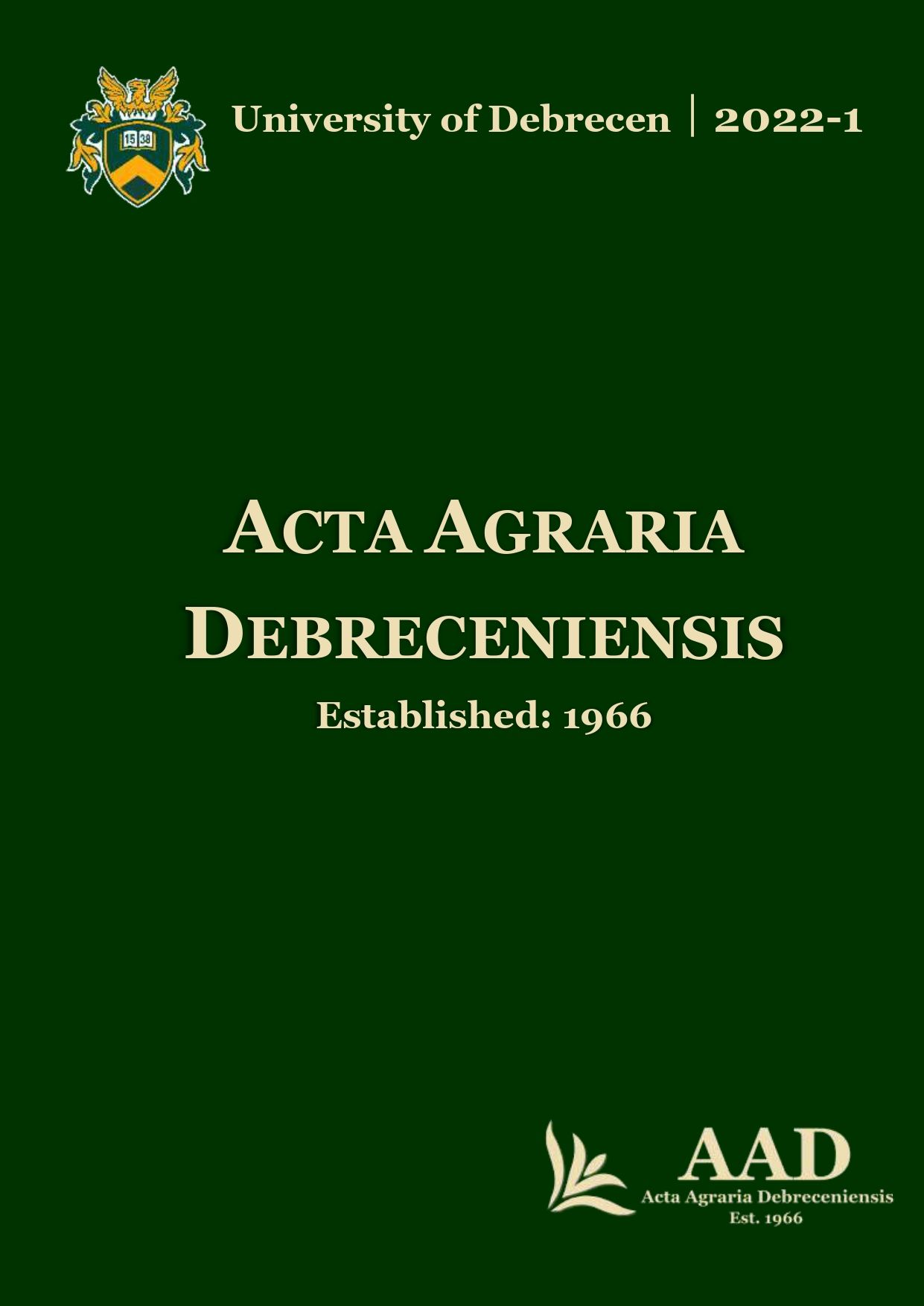Combined traffic control of irrigation on heterogeneous field
Authors
View
Keywords
License
Copyright (c) 2022 by the Author(s)

This work is licensed under a Creative Commons Attribution 4.0 International License.
How To Cite
Accepted 2022-04-07
Published 2022-05-26
Abstract
In arid areas, such as Hungary, most climate models forecast a rise in water scarcity. Irrigated land accounts for 2% of agricultural land in Hungary, with most irrigation technology being relatively outdated. The aim of this research was to lay the foundation for a combined traffic management system for a water-saving precision irrigation system on an 85-ha field in the Tisza River basin's reference region. High-precision soil maps were created to support the water-efficient variable-rate irrigation system by selecting and selecting areas for different agrotechnical implementations and precision farming zones.
References
- Aiking, H. (2011): Future protein supply, Trends in Food Science & Technology, Volume 22, Issues 2–3, Pages 112–120.
- Beddington, J. (2013): 2030: The “Perfect Storm” Scenario. Population Institute. UK. England. https://www.foresightfordevelopment.org/sobipro/55/933-2030-the-perfect-storm-scenario
- Bindraban, P.S.–Rabbinge, R. (2011): European food and agricultural strategy for 21st century. International Journal of Agricultural Resources, Governance and Ecology. 9:1–2.
- Cartwright, A. - Batory, A. (2012): Monitoring Committees in Cohesion Policy: Overseeing the Distribution of Structural Funds in Hungary and Slovakia, Journal of European Integration, 34:4, 323–340.
- Falkenmark, M. (2013): Growing water scarcity in agriculture: future challenge to global water security. Philosophical Transactions of the Royal Society A: Mathematical, Physical and Engineering Sciences. 371. 2002, 20120410–20120410.
- FAO (2018): The future of food and agriculture – Alternative pathways to 2050. Rome. 224 pp. Licence: CC BY-NC-SA 3.0 IGO.
- Food Security and Nutrition of the Committee on World Food Security, Rome 2015.
- HLPE (2015): Water for food security and nutrition. A report by the High-Level Panel of Experts on
- Juhász, Cs.–Gálya, B.–Kovács, E.–Nagy, A.–Tamás, J.–Huzsvai, L. (2020): Predictability of weather and crop yield in regions of continental four-season climate. Computers and electronics in agriculture, 173: Paper: 105400.
- Nagy, A.–Fehér, J.–Tamás, J. (2018): Wheat and maize yield forecasting for the Tisza river catchment using MODIS NDVI time series and reported crop statistics. Computers and Electronics in Agriculture 151 pp. 41–49.
- Neupane, J.–Guo, W. (2019): Agronomic Basis and Strategies for Precision Water Management: A Review. Agronomy, 9. 2, 87.
- Panella, T. (2020): Development for water, food, and nutrition security in a competitive environment-An Asian perspective. Irrigation and Drainage. 1–8 p.
- Sui, R.–Yan, H. (2017): Field study of variable rate irrigation management in humic climates. Irrigation and Drainage. 66: 327–339.
- Takács, S.–Bíró, T.–Helyes, L.–Pék, Z. (2019): Variable rate precision irrigation technology for deficit irrigation processing of tomato. Irrigation and Drainage. 68: 234–244.
- Tamás, J.–Nagy, A.–Fehér, J. (2015): Agricultural biomass monitoring on watersheds based on remote sensed data, Water Science and Technology 72. 12. 2212–2220.

 https://doi.org/10.34101/actaagrar/1/10369
https://doi.org/10.34101/actaagrar/1/10369